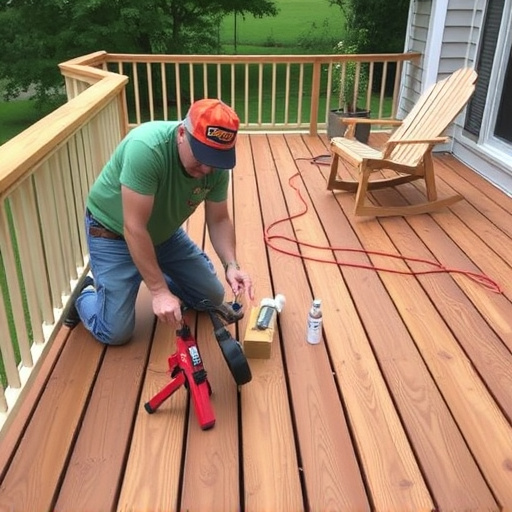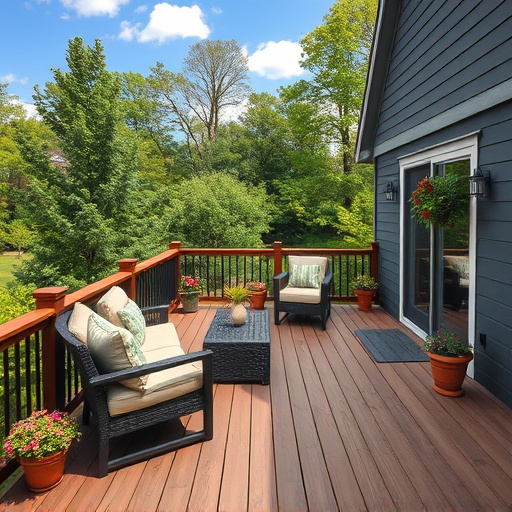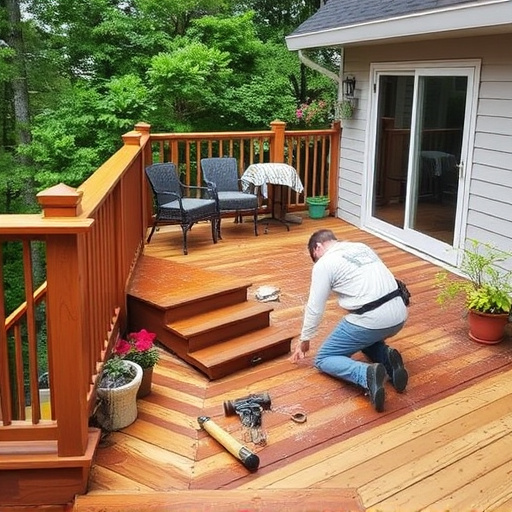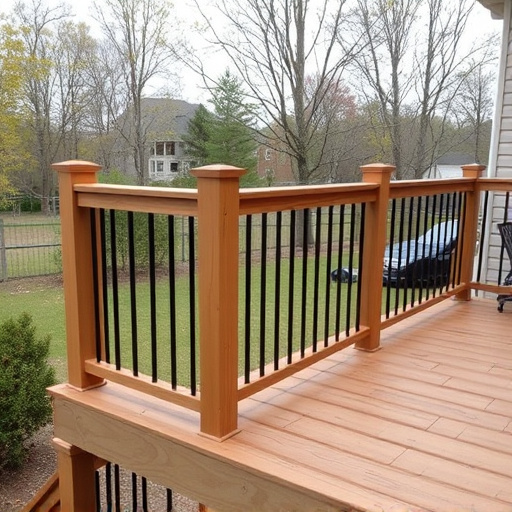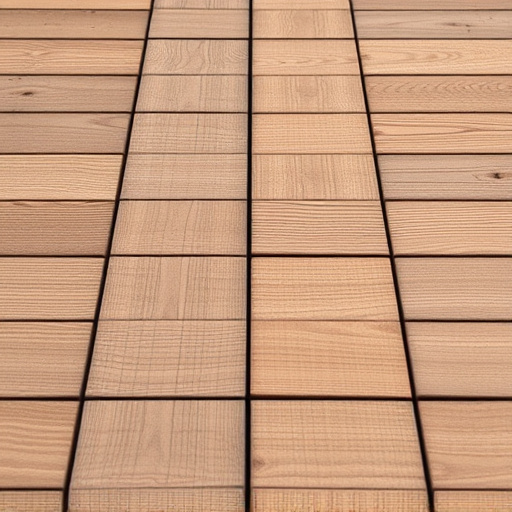Regular deck sealing (every 2-3 years) protects wood from weather, UV damage, fading, and cracking. Effectiveness depends on environmental factors like sunlight, humidity, rainfall, and temperature. Commercial siding repairs may be needed if wood deteriorates or initial sealing was inadequate. Proactive maintenance includes periodic deck inspections for optimal sealant intervals.
Deck sealing is an essential maintenance practice to protect your outdoor investment. Knowing how often to schedule these services can be a challenge, as it depends on various factors. In this guide, we’ll explore the ideal frequencies for deck sealing and delve into environmental considerations that impact sealant durability. We’ll also provide insights on recognizing when reapplication is necessary, ensuring your deck remains in top condition for years to come.
- Understanding Deck Sealing Frequencies
- Environmental Factors Affecting Sealant Durability
- When to Schedule Reapplication Services
Understanding Deck Sealing Frequencies
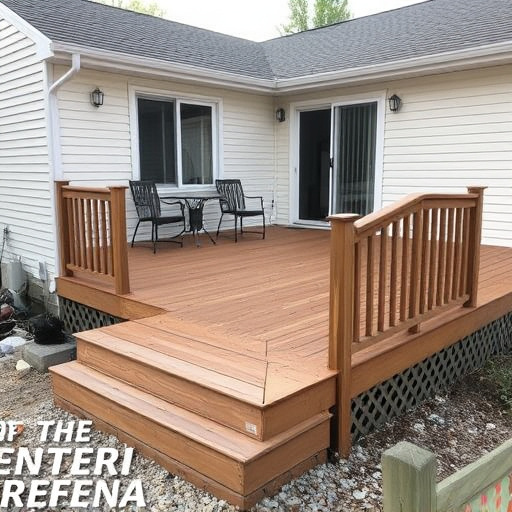
When considering deck sealing services, understanding the recommended frequencies is a crucial step in maintaining your outdoor space. The optimal timing for sealing depends on several factors, including climate conditions and the type of decking material used. Generally, it’s advised to seal wood decks every 2-3 years to protect against weather damage and UV exposure, which can cause fading and cracking.
Regular deck sealing is an essential part of home maintenance, acting as a protective barrier against elements that can degrade your decking over time. Professionals recommend a thorough inspection during each sealing process, looking for signs of rot, mold, or pest infestation. This proactive approach ensures not only the aesthetic appeal but also the structural integrity of your deck, complementing other home service solutions like roofing and siding to safeguard your outdoor investment.
Environmental Factors Affecting Sealant Durability
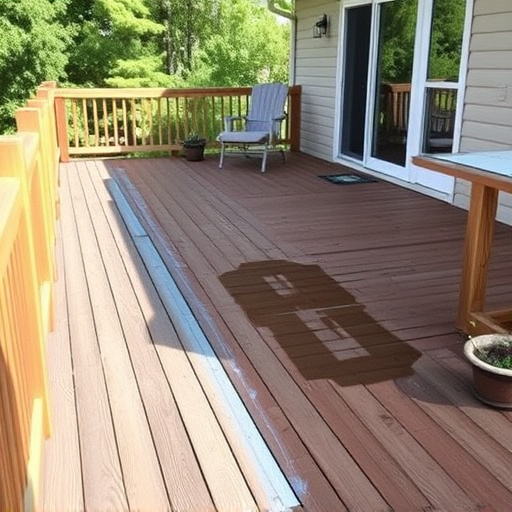
Deck sealing is an essential maintenance practice, but its effectiveness is influenced by various environmental factors. These elements play a crucial role in determining how long a sealant will last on your deck. One significant factor is sunlight exposure; direct and intense sun rays can accelerate the aging process of sealants, making them more susceptible to cracking and peeling over time. This is particularly relevant for areas with high annual sunshine hours.
Additionally, moisture content in the air and rainfall patterns impact sealant durability. High humidity levels and frequent rains can weaken sealants, especially if not properly maintained. Extreme temperatures, whether scorching heat or freezing cold, also contribute to reduced longevity. Commercial roofing and residential roofing alike face these challenges, as do siding and gutters, which highlights the need for regular deck sealing services to protect these surfaces from environmental damage.
When to Schedule Reapplication Services
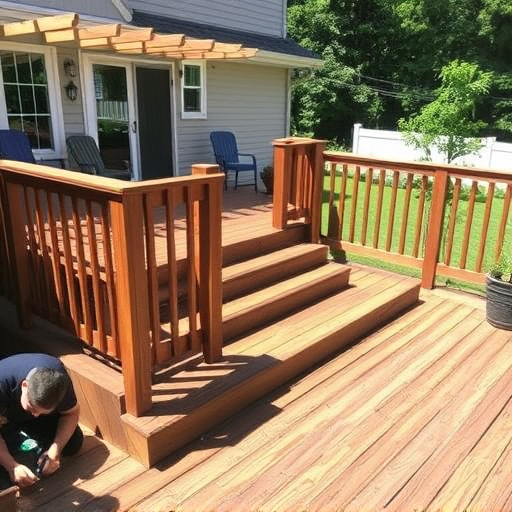
The frequency of deck sealing reapplication depends on several factors, including regional climate conditions and the type of wood used in your deck’s construction. In general, it’s recommended to have your deck sealed every 2-3 years for optimal protection against weather damage, UV exposure, and moisture infiltration.
If you reside in regions with frequent rainfall, harsh winters, or prolonged sunlight exposure, your deck may require more frequent sealing. Commercial siding repairs might also become necessary if there are signs of significant wood deterioration or if the initial sealing was not thorough. As part of regular maintenance, consider scheduling a roof consulting service to inspect your deck and recommend appropriate sealing intervals. This proactive approach ensures your investment in your outdoor living space remains well-protected and aesthetically pleasing for years to come.
Regular deck sealing is essential for protecting your deck from the elements and prolonging its lifespan. Understanding the factors that influence sealant durability, such as environmental conditions, allows you to schedule deck sealing services optimally. By reapplying sealants based on wear and tear rather than strict timelines, you ensure your deck remains in top condition, providing both aesthetic appeal and structural integrity for years to come.








